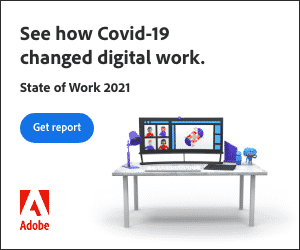Good morning, Marketer, and are you being creepy?
No, I’m sure you’re not, but you know what I mean. Over the last few days, I’ve had one of those personalized marketing experiences which, if it doesn’t cross the line, gets pretty close.
As a journalist covering marketing and technology, I often have cause to look up a vendor or product I’ve not heard of before. One of our contributors filed a story this week containing one brief reference to a vendor with an unusual name. Simply to check the spelling (and whether it was really yet another proper name beginning with a lowercase letter), I did a quick Google search. That’s all. I didn’t explore the vendor’s website, download a white paper, or put on a t-shirt saying “Intent!”
That one Google search generated a steady stream of ads for the vendor — but on my personal social media. My Chrome browser activity triggered Instagram ads. It’s a waste of marketing dollars for the vendor, of course, but it’s also the kind of strategy — take someone who is barely even top of funnel and flood them with messages — that puts buyers off.
Kim Davis
Editorial Director



